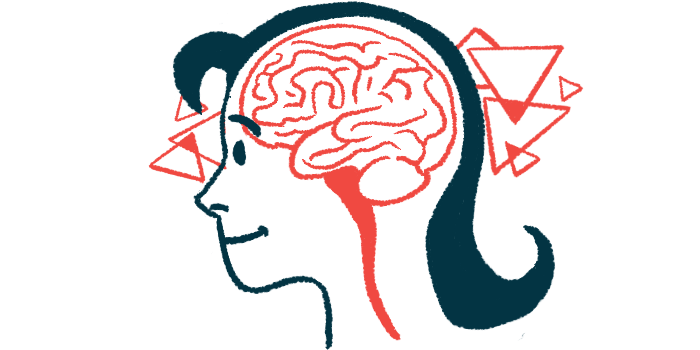Changes in normal brain structure seen on MRI scans of SMA patients
Brain abnormalities visible on MRI scans were seven times more likely in people with spinal muscular atrophy (SMA) than in those without the disease, a small study found.
Patients with indicators of more severe disease, including having SMA type 1 and fewer copies of the SMN2 gene, had the highest rate of these structural changes.
Findings support brain involvement in SMA, which may inform future treatment strategies, the researchers, all with McGill University in Montreal, noted.
The study, “Macrostructural Brain Abnormalities in Spinal Muscular Atrophy,” was published in Neurology Genetics.
Most of 21 patients in the study had SMA type 2, four had type 1 disease
SMA is characterized by the progressive degeneration of lower motor neurons, the specialized nerve cells that transmit signals between the spinal cord and muscles to coordinate movement, due to a loss of the SMN protein. This leads to classic disease symptoms of progressive muscle weakness and wasting.
Accumulating evidence also suggests that the brain might be involved in the disease. Some case reports indicate the presence of brain tissue loss (atrophy) and other structural changes in SMA patients, although a comprehensive understanding of brain abnormalities in the disease is lacking.
Using MRI scans, the scientists looked for brain abnormalities in a group of 21 children and adults with SMA and 21 age- and sex-matched normally developing peers, who served as a control group. They were particularly interested in macrostructural abnormalities, or larger changes that are easily visible to the eye.
Most SMA patients had type 2 SMA (43%) followed by SMA type 3 (38%), while 19% had type 1 disease. All were being treated with disease-modifying therapies, and most (76%) were unable to walk independently.
Among the 21 patients, nine (43%) were found to have macrostructural brain abnormalities on MRI scans, compared with two of the 21 controls (10%), amounting to a seven times higher risk of brain abnormalities with SMA.
Eight different types of abnormalities were observed, with the most common being supratentorial ventriculomegaly, a condition in which the fluid-filled cavities (ventricles) in the upper part of the brain are larger than normal; and a widening of the arachnoid spaces, another cavity containing fluid and connective tissue on the brain’s surface.
Each of these structural differences were observed in 44% — 4 of 9 — of the SMA patients with brain abnormalities, and three of the four people with SMA type 1 had both. This group also had two SMN2 gene copies.
Structural brain abnormalities seen in people with other neuromuscular disease
Among SMA patients overall, brain abnormalities were more frequent in those with less than three SMN2 gene copies and in those with SMA type 1, both of which generally are associated with more severe disease.
Patients had a significantly larger ventricle volume than did controls, with the largest ventricles observed in those with SMA type 1 and fewer SMN2 copies.
Enlargement of brain cavities is consistent with an overall loss of brain tissue, or brain atrophy, according to the scientists.
Patients with structural brain abnormalities scored numerically lower on motor function tests than did those without them, although the differences failed to reach statistical significance.
“Individuals with SMA have higher rates of macrostructural brain abnormalities than their normally developing peers,” the researchers wrote.
While it isn’t clear what causes these abnormalities in SMA, similar changes can be observed in other neuromuscular diseases, they noted.
“Overlapping findings between neuromuscular disorders raise the question whether restricted motor development in early life could … be responsible for the alterations in brain architecture identified in patients with SMA,” the scientists wrote. But, they added, “it is possible that structural brain abnormalities in SMA arise from substantially reduced SMN protein levels during a critical period of early brain development.”
A better understanding of these changes “may not only inform the development of adjunct therapies but also potentially provide guidance for rehabilitation strategies within the SMA population,” they added.
Noted study limitations include its small size and the fact that the analysis did not look at the effects of SMA treatment on brain structure over time.
“Larger longitudinal studies are necessary to validate our results and further explore the intricate relationship between motor dysfunction, treatment, and structural brain alterations in SMA,” the team concluded.
The study was funded by Muscular Dystrophy Canada.
The post Changes in normal brain structure seen on MRI scans of SMA patients appeared first on SMA News Today.





